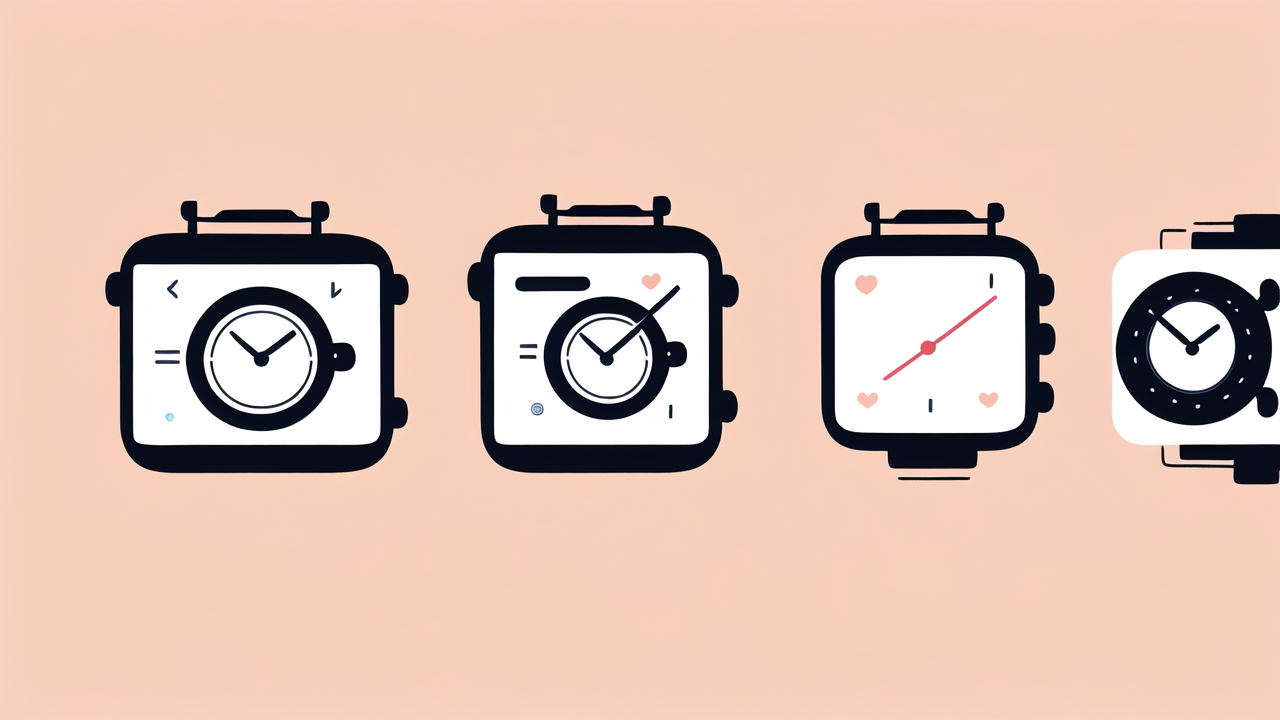Introduction to Smart Bracelets and Watches
What are Smart Bracelets?
Smart bracelets are wearable devices that track fitness and health data. They are slim, lightweight, and often have a simple design. These gadgets usually focus on basic functions like step counting, sleep tracking, and heart rate monitoring. Smart bracelets are popular for their long battery life and affordable price points. They're ideal for those who want basic health tracking without the bulk of a watch. Many users prefer them for their discreet appearance and ease of use during workouts.

What are Smart Watches?
Smart watches are more advanced wearable devices with a wider range of features. They have a watch-like design with a larger display screen. Smart watches can perform many smartphone functions, such as making calls, sending messages, and running apps. They often include GPS, music storage, and mobile payment options. These devices offer more detailed fitness tracking and health monitoring. Smart watches are suitable for those who want a mini-computer on their wrist. They're popular among tech enthusiasts and professionals who need quick access to information.
The Evolution of Wearable Technology in the United States
Wearable tech has come a long way in the US. It started with basic pedometers in the 1960s. The first modern fitness trackers appeared in the early 2000s. These devices could sync with computers to track steps and calories. Smart bracelets like Fitbit gained popularity in the 2010s. They offered more accurate tracking and smartphone connectivity. Apple introduced the Apple Watch in 2015, sparking a smart watch boom. Since then, wearables have become more advanced and affordable. Today, they offer features like ECG monitoring and fall detection. The US market continues to grow, with new innovations appearing regularly.
Comparing Features and Benefits
Key Differences Between Smart Bracelets and Watches
Smart bracelets and watches differ in several key areas. Size is a major factor. Bracelets are smaller and lighter, while watches are larger with bigger screens. Battery life varies too. Bracelets often last a week or more, but watches may need daily charging. Feature sets are another difference. Bracelets focus on fitness tracking with limited smart features. Watches offer a wider range of functions, including apps and communication tools. Price is also a consideration. Bracelets are generally more affordable than smart watches. The choice often comes down to personal needs and preferences.

Analyzing the Health and Wellness Features
Both devices offer health tracking, but with different levels of detail. Smart bracelets excel at basic fitness metrics. They track steps, calories, and sleep patterns. Many also monitor heart rate and stress levels. Some newer models can measure blood oxygen levels. Smart watches provide these features and more. They often include GPS for accurate run tracking. Many offer advanced heart health features like ECG. Some can detect falls or irregular heart rhythms. Watches usually have more detailed health apps and insights. The choice depends on how much health data you need.
Considering Lifestyle and Fashion Preferences
Style plays a big role in choosing between smart bracelets and watches. Bracelets are more discreet and can blend with various outfits. They're great for those who prefer a minimalist look. Watches are more noticeable and can be a fashion statement. Many smart watches offer customizable faces and changeable bands. This allows for more personalization. Consider your daily activities and style preferences. If you want a device that's hardly noticeable, a bracelet might be best. For a more versatile accessory that doubles as a watch, choose a smart watch.
Selecting the Best Device for You
Personalization and Customization Options
When choosing between smart bracelets and watches, consider personalization options. Smart bracelets often have limited customization. You may be able to change bands or adjust display settings. Some allow you to choose which notifications to receive. Smart watches offer more extensive personalization. You can customize watch faces, app layouts, and complications. Many allow you to download new apps and features. Think about how much control you want over your device's look and function. If you enjoy tweaking settings and appearances, a smart watch might be more satisfying.

Compatibility with Other Technologies and Services
Compatibility is crucial when selecting a wearable device. Smart bracelets usually work with most smartphones. They often have their own apps for data syncing and analysis. Some integrate with popular fitness apps like MyFitnessPal. Smart watches typically offer broader compatibility. They can connect to various apps and services. Many allow you to control smart home devices or make contactless payments. Consider which other tech you use daily. If you're heavily invested in a particular ecosystem (like Apple or Google), a compatible smart watch might be more useful.
Long-term Usability and Durability Considerations
Think about long-term use when choosing your device. Smart bracelets are often more durable due to their simpler design. They have fewer components that can break or wear out. Many are water-resistant or waterproof. Smart watches, while more complex, are improving in durability. They now offer better water and dust resistance. Consider how you'll use the device daily. If you're rough on your gear or work in harsh conditions, a rugged smart bracelet might be best. For those who want a device that can grow with them through software updates, a smart watch could be the better choice.




Leave a comment
This site is protected by hCaptcha and the hCaptcha Privacy Policy and Terms of Service apply.